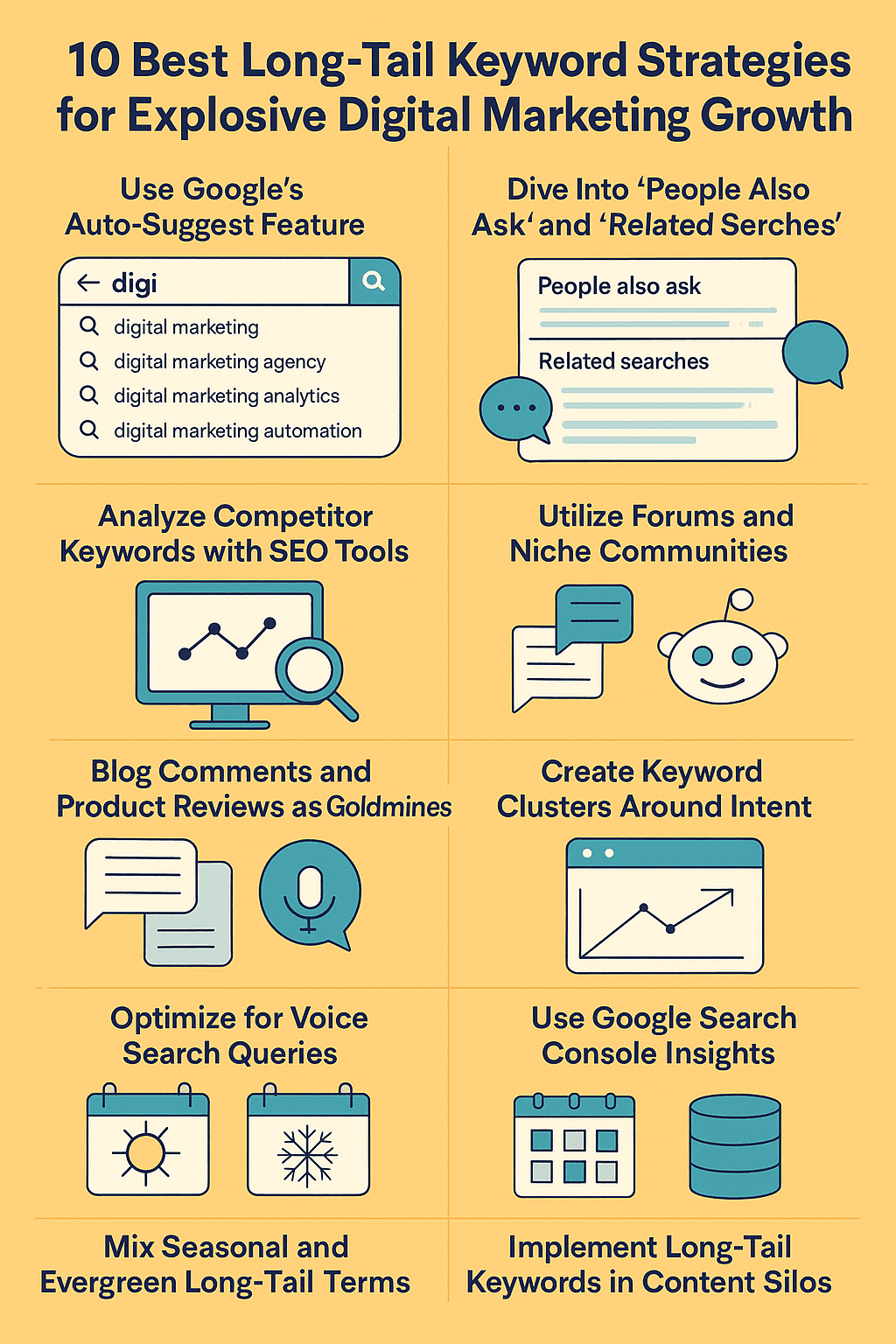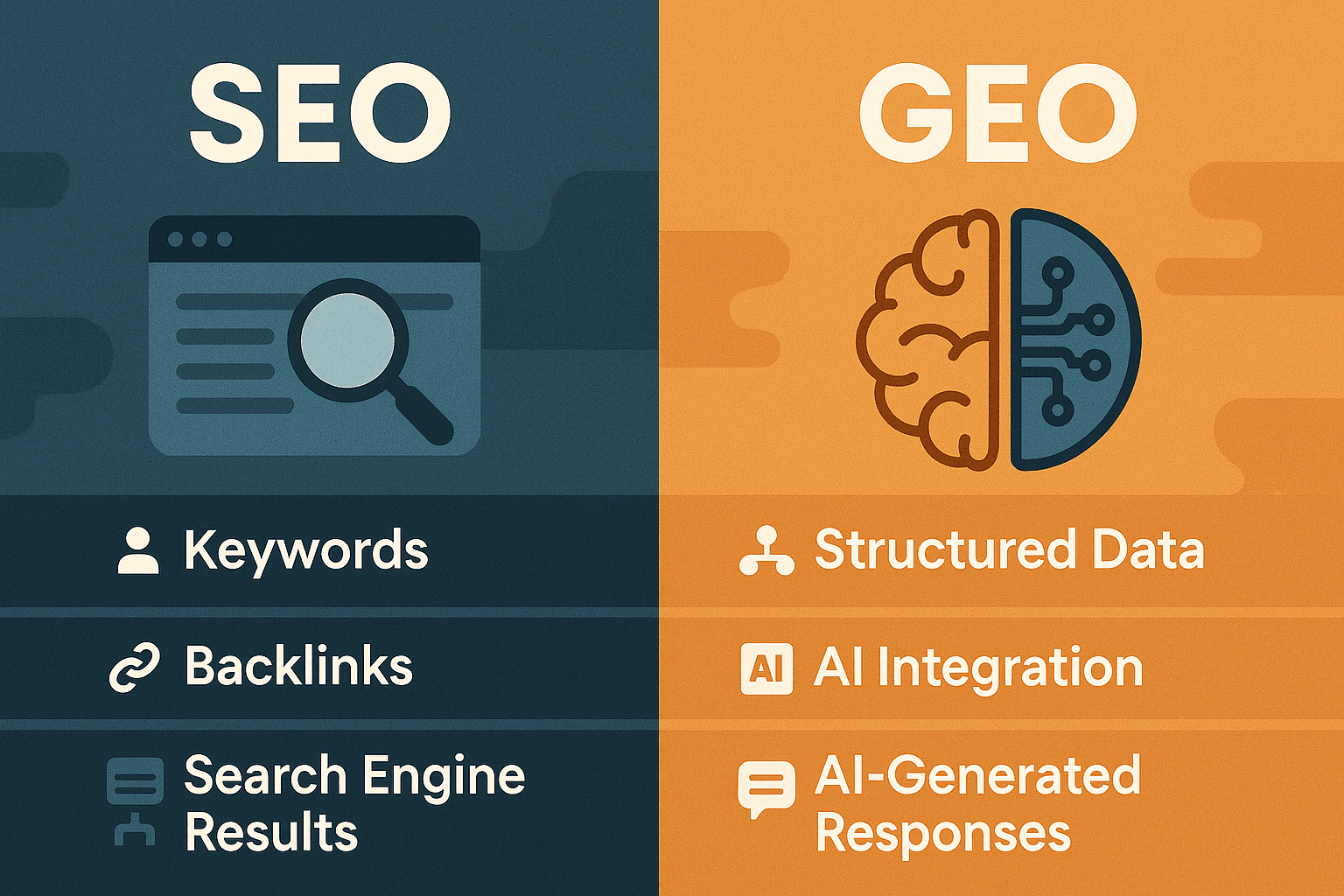Introduction to Long-Tail Keywords in Digital Marketing
In the ever-evolving world of digital marketing, standing out in search results is harder than ever. That’s where long-tail keywords come into play. These are highly specific keyword phrases, usually containing three or more words, that target niche user intent.
Unlike short, broad keywords like “marketing,” long-tail terms such as “best content marketing strategies for small businesses” help brands capture users further down the purchase funnel. This makes them a secret weapon for brands looking to grow with laser-focused content.
Why Long-Tail Keywords Are Game-Changers for Growth
Long-tail keywords aren’t just a trend—they’re a digital growth hack. Here’s why:
- Higher Conversion Rates: These keywords often attract users who are ready to take action, leading to more sales or signups.
- Less Competition: Long-tail terms are typically easier to rank for, especially for new or small websites.
- Better Targeting: You speak directly to the audience’s intent, increasing engagement and trust.
Strategy 1: Use Google’s Auto-Suggest Feature
One of the simplest tools is right at your fingertips—Google’s search bar.
How to Use:
- Type in your primary keyword (e.g., “digital marketing for…”).
- Google will auto-complete the phrase with popular searches.
These suggestions are real queries people use, making them perfect long-tail keyword ideas.
Strategy 2: Dive Into “People Also Ask” and “Related Searches”
Scroll down on a Google results page and you’ll see two goldmines:
- People Also Ask (PAA): These questions reflect common user problems.
- Related Searches: Great for building topic clusters.
Pro Tip: Plug these into your content outline to answer real-world user questions.
Strategy 3: Analyze Competitor Keywords with SEO Tools
Tools like Ahrefs, SEMrush, and Ubersuggest show you exactly which long-tail keywords your competitors rank for. Analyze:
- Top-performing pages
- Keyword gaps
- SERP positioning
This helps you reverse-engineer their traffic.
Strategy 4: Utilize Forums and Niche Communities
Platforms like Reddit, Quora, and Facebook groups reveal user-generated queries in specific industries.
For example, searching “how to grow a marketing agency” on Reddit often brings up authentic, long-tail keyword gems.
Strategy 5: Blog Comments and Product Reviews as Goldmines
Long-tail keywords often hide in plain sight:
- Comment sections
- Amazon product reviews
- Testimonials
These are filled with user intent, ready to be tapped into for content ideas.
Strategy 6: Create Keyword Clusters Around Intent
Organize your long-tail keywords into clusters based on the buyer’s journey:
- Awareness: “What is digital branding?”
- Consideration: “Best tools for digital branding”
- Decision: “Affordable digital branding services near me”
This improves site architecture and engagement.
Strategy 7: Optimize for Voice Search Queries
With more users using voice search via Siri or Alexa, natural, question-based long-tail queries like:
- “What’s the best SEO tool for beginners?”
- “How can I grow my Instagram account fast?”
These are conversational and reflect real speech patterns—perfect for long-tail SEO.
Strategy 8: Use Google Search Console Insights
Your existing site might already be ranking for long-tail keywords! Check Search Console > Performance to uncover:
- Queries with impressions but low clicks
- Pages that could be optimized further
Use these insights to boost underperforming pages.
Strategy 9: Mix Seasonal and Evergreen Long-Tail Terms
Balance content planning with:
- Evergreen: “Best digital marketing tips for startups”
- Seasonal: “Holiday marketing trends 2025”
This ensures consistent traffic all year long.
Strategy 10: Implement Long-Tail Keywords in Content Silos
Create content silos—interlinked posts around a specific topic. For example:
- Parent Page: Digital Marketing for Real Estate
- Subpages: Email marketing for real estate agents, SEO tips for realtors, etc.
This structure tells search engines you’re an authority on that niche.
Best Tools to Find Long-Tail Keywords in 2025
| Tool | Features | Best For |
|---|---|---|
| AnswerThePublic | Visual keyword maps | Topic brainstorming |
| AlsoAsked.com | Question-based suggestions | FAQ targeting |
| KeywordTool.io | Generates suggestions from Google, YouTube, Bing | Multi-platform SEO |
| Ubersuggest | Competitor analysis + keyword ideas | Beginners and pros |
| Ahrefs/SEMrush | In-depth SEO data | Advanced strategies |
Common Mistakes to Avoid with Long-Tail Keywords
Avoid these pitfalls:
- Keyword Stuffing: Google will penalize unnatural repetition.
- Ignoring User Intent: Make sure your content answers the query.
- Choosing Irrelevant Terms: Only use keywords that fit your audience’s goals.
Measuring the ROI of Your Long-Tail Keyword Strategy
Track success using:
- Organic traffic to long-tail-focused pages
- Bounce rate and time on page
- Conversion metrics (signups, purchases)
Use tools like Google Analytics, Hotjar, and GSC to fine-tune your strategy.
Case Study: How a Small Brand Grew 10x Using Long-Tail Keywords
A boutique skincare brand used long-tail terms like “best anti-aging cream for dry skin at night” and saw:
- 700% increase in organic traffic
- 10x ROI on content creation
- Improved keyword rankings within 3 months
All from targeting user-specific problems with smart keyword strategy.
FAQs About Long-Tail Keyword Strategies
1. What makes long-tail keywords better than short keywords?
They target specific user intent, making them easier to rank for and more likely to convert.
2. How do I find long-tail keywords for free?
Use Google’s autocomplete, “People Also Ask,” and Google Search Console.
3. Can I rank quickly with long-tail keywords?
Yes, especially on low-competition topics. They often rank faster than head terms.
4. Are long-tail keywords good for ecommerce?
Absolutely! They capture users ready to buy, like “best eco-friendly running shoes under $100.”
5. How many long-tail keywords should I use in a blog post?
Aim for 2–3 per post, spread naturally throughout your content.
6. Do long-tail keywords help with voice search optimization?
Yes. Voice searches tend to be longer and more conversational—perfect for long-tail strategy.
Conclusion and Final Tips for Digital Marketing Success
The best long-tail keyword strategies for digital marketing growth aren’t about luck—they’re about intent, research, and structure. By understanding how users search and building content around their needs, you create SEO that converts.
Start with real questions, build around topic clusters, and monitor ROI regularly. In 2025 and beyond, this strategy will help your brand rise in SERPs while connecting deeply with your target audience.





